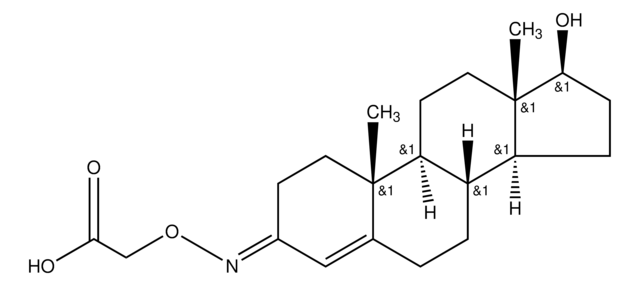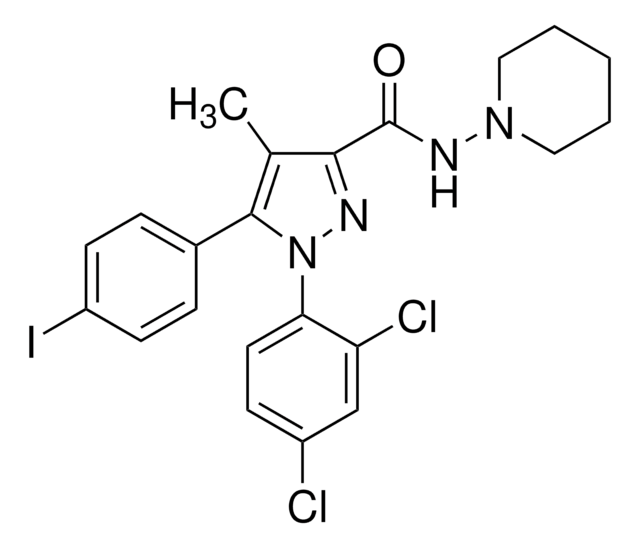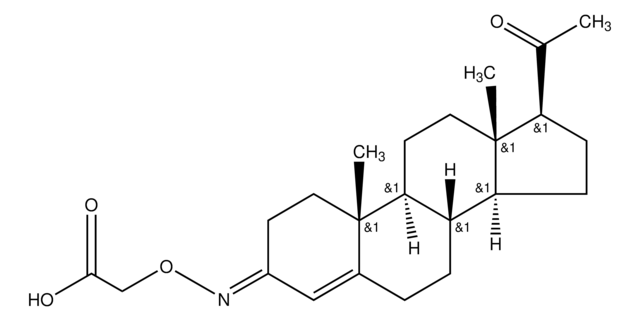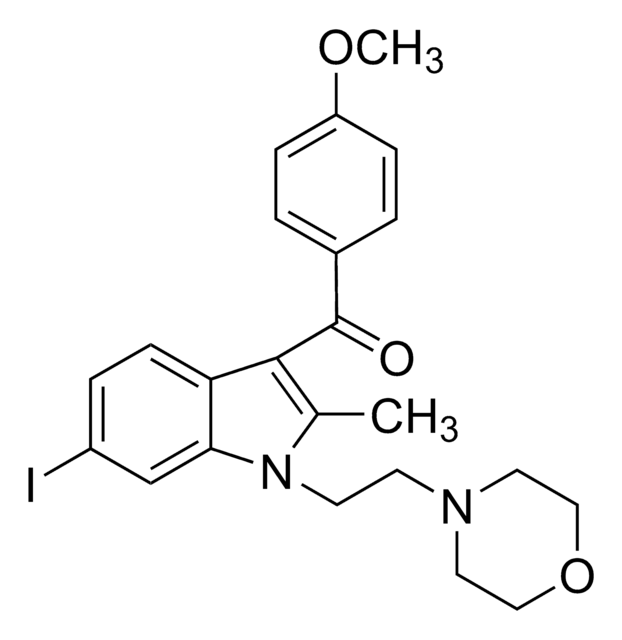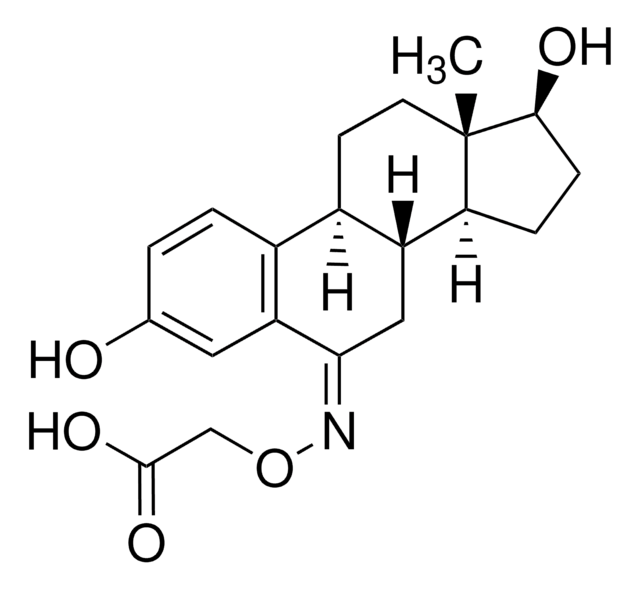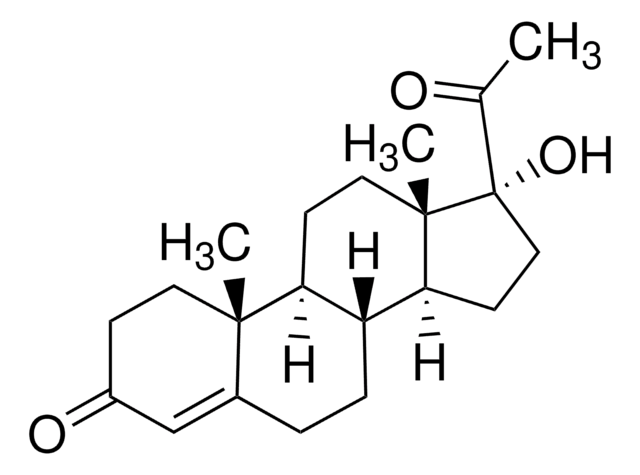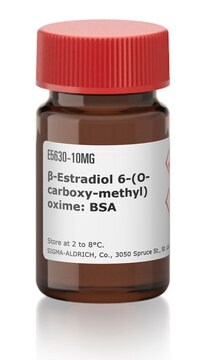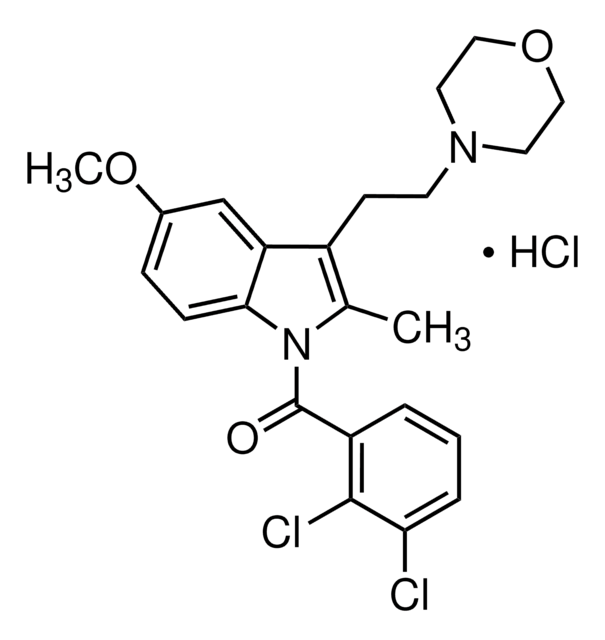W102
(R)-(+)-WIN 55,212-2 mesylate salt
≥98% (HPLC), powder, CB2 agonist
Synonym(s):
(R)-(+)-[2,3-Dihydro-5-methyl-3[(4-morpholinyl)methyl]pyrrolo[1,2,3-de]-1,4-benzoxazinyl]-(1-naphthalenyl)methanone mesylate salt, WIN 55212-2 methanesulfonate, WIN 552122 mesylate
About This Item
Recommended Products
Product Name
(R)-(+)-WIN 55,212-2 mesylate salt, ≥98% (HPLC)
Quality Level
Assay
≥98% (HPLC)
form
powder
drug control
regulated under CDSA - not available from Sigma-Aldrich Canada
color
white to beige
solubility
0.1 M HCl: 0.25 mg/mL
DMSO: 12 mg/mL
45% (w/v) aq 2-hydroxypropyl-β-cyclodextrin: 2.4 mg/mL
0.1 M NaOH: insoluble
H2O: insoluble
SMILES string
CS(O)(=O)=O.Cc1c(C(=O)c2cccc3ccccc23)c4cccc5OC[C@@H](CN6CCOCC6)n1c45
InChI
1S/C27H26N2O3.CH4O3S/c1-18-25(27(30)22-9-4-7-19-6-2-3-8-21(19)22)23-10-5-11-24-26(23)29(18)20(17-32-24)16-28-12-14-31-15-13-28;1-5(2,3)4/h2-11,20H,12-17H2,1H3;1H3,(H,2,3,4)/t20-;/m1./s1
InChI key
FSGCSTPOPBJYSX-VEIFNGETSA-N
Gene Information
human ... CNR1(1268) , CNR2(1269)
General description
Application
Biochem/physiol Actions
Features and Benefits
Preparation Note
Legal Information
Storage Class Code
11 - Combustible Solids
WGK
WGK 3
Flash Point(F)
Not applicable
Flash Point(C)
Not applicable
Personal Protective Equipment
Choose from one of the most recent versions:
Already Own This Product?
Find documentation for the products that you have recently purchased in the Document Library.
Customers Also Viewed
Our team of scientists has experience in all areas of research including Life Science, Material Science, Chemical Synthesis, Chromatography, Analytical and many others.
Contact Technical Service